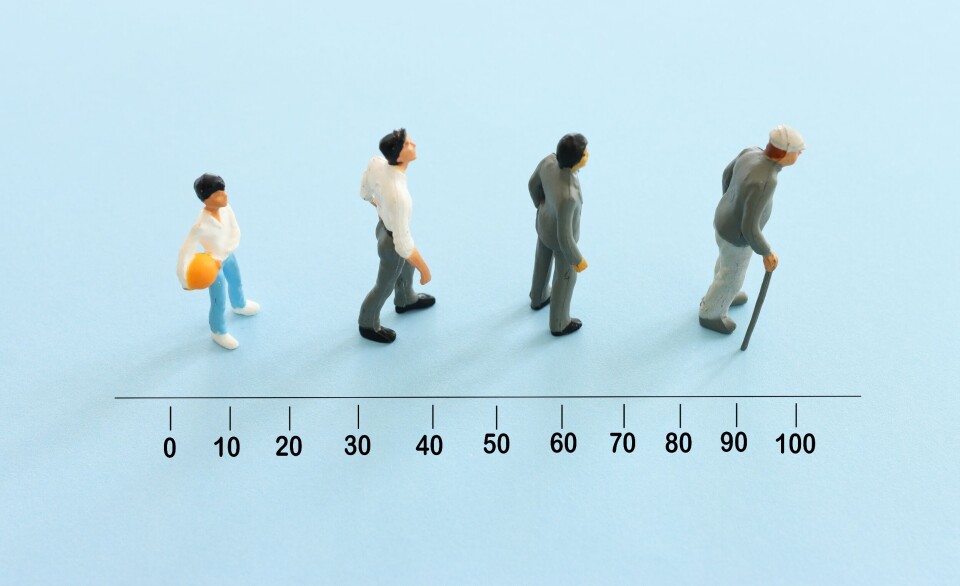-
French MPs back plan to make new doctors set up in underserved areas
The controversial bill has been adopted in parliament, but many medical professionals are opposed
-
France considers linking health reimbursements to income to curb deficit
State auditors urge reform as government faces €15.3bn shortfall in 2024
-
What is being proposed to help people in areas that lack doctors in France
The new law on doctor location is set to improve ‘healthcare equality’, but doctors are critical
My operation in France: Hip replacement
The inside story of readers who have had operations in France... This is the second of six different operations we will be covering. Series by Gillian Harvey

Retired office worker Dorothy Morison, 71, suffered hip pain for years before she moved to Maine-et-Loire with husband, Colin, in 2012. She had both hips replaced in 2014 and tells how she fared with the operation
Initial symptoms
I suffer from scoliosis (curvature of the spine) and had been experiencing worsening hip pain on the right-hand side for several years.
Doctors in the UK had put the idea of a hip replacement on hold, due to the problem with my spine, as they felt it might not be helpful. The pain continued and worsened, so when we registered with our French doctor in April 2013, I went along to see if anything could be done.
At the doctors
As soon as I walked into the GP’s office she said: “I don’t like the way you walk.”
I explained about my scoliosis and hip pain, and she referred me for an X-ray.
This revealed that both my hip joints were worn down and needed to be replaced.
I was shocked: I’d known that one of my hips was causing pain but I hadn’t realised the other joint was problematic too.
At the hospital
Once I had been referred to the surgeon at the clinic in Saumur, things moved quickly. I was booked in for my first hip replacement the following month.
When I saw the anaesthetist, I told him that when I’d had general anaesthetics in the past, I’d taken a while to recover, so he suggested they use a spinal anaesthetic rather than knocking me out completely.
I was really happy that my concerns were listened to.
The operation
The operation itself went according to plan; however, because of my scoliosis, the anaesthetist was unable to use the spinal anaesthetic as planned because of the twist in my spine. Instead, I had to have a general anaesthetic which left me feeling groggy for a few days.
However, I was amazed on waking that the pain I’d been suffering from in my hip for so long had all but disappeared!
I was given plenty of medication, but found that paracetamol was enough to manage any discomfort.
When it came to the second operation, five months later, they tried a different sort of anaesthetic.
This time, a block was put each side of the operation site, and the area was flooded with local anaesthetic.
To my delight, it worked, and although I don’t remember anything about the operation itself, I was alert 30 minutes after the surgery and recovered quickly.
Hospital stay
After both operations, I was encouraged to get up and walk the same day for a short period. After the first, I was kept in for six days; the second saw me hospitalised initially for just five.
On both occasions, I needed to have a blood transfusion, which meant staying in bed for at least 12 hours for effective recovery. I found the medical staff brilliant – they were all so efficient and caring.
Going home
I left with a prescription for pain relief, and another to book the local nurse for post-operative home-visits to check my wound. I was also given a set of crutches to help with mobility.
The surgeon told me after the first op that there was no point my starting physio until the other hip had been done, so I didn’t have any specific rehabilitation until later that year.
After the second operation, I was re-admitted as my visiting nurse was worried I was developing an infection – the site of the anaesthetic block was very bruised and was weeping a little from the wound.
It was disappointing to have to go back to hospital for five days – although I did have five hunky pompiers carrying me down the stairs!
As promised, once both hips had been done, my surgeon referred me to a physiotherapist for as much rehabilitation as was required.
It took time to build my strength back up, but I am now back on my bike, although I have treated myself to one with a motor to get me up the final hill at the end of a ride!
FACTS ON HIP REPLACEMENTS by Dr Frédéric Laude, Orthopaedic Surgeon from the Clinique de Sport, Paris
What are the most common symptoms of a hip problem?
The most common problems are pain and stiffness, which may also be felt in the groin and may also radiate to the knee.
When the pain occurs at night, it can be very difficult for the patient to manage. Usually, the patient also experiences a lack of motion in the joint.
How long does the operation usually take?
The operation is short in duration, with an experienced surgeon often able to perform the surgery in under an hour.
How long do patients normally stay in hospital?
A normal hospital stay is around one or two nights.
Most patients do not need to attend a rehabilitation centre after this operation.
What aftercare might patients need?
Many patients find that they are able to return to normal life within a few days, and can drive again in under a week (or less, if it is the left hip).
Many patients no longer need specific rehabilitation after an operation of this kind.
























